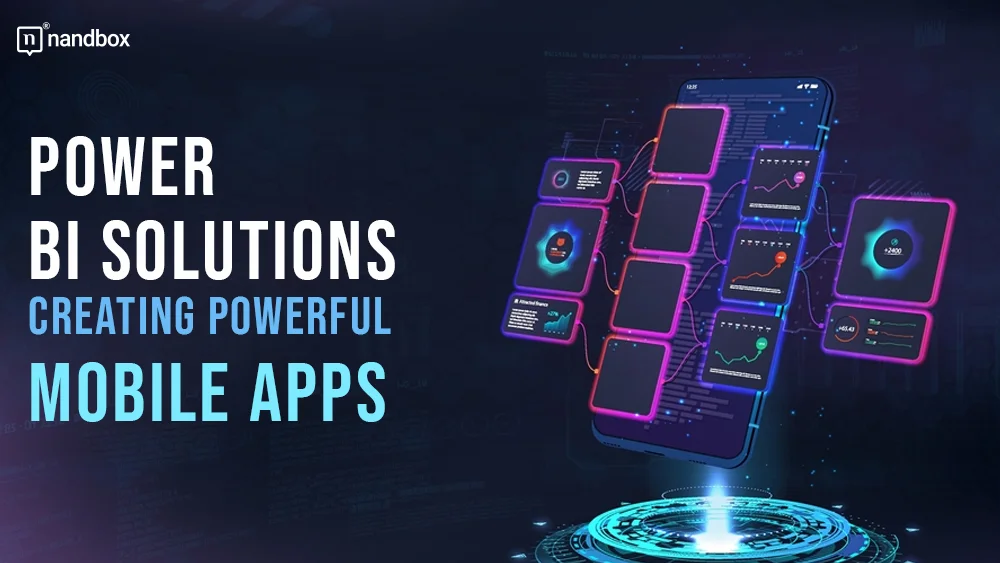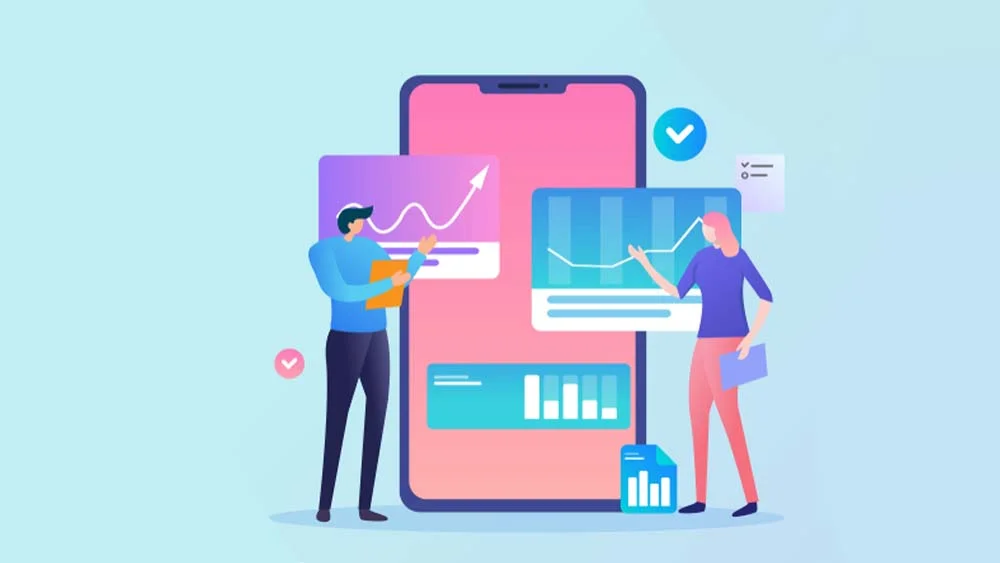In the modern, information-rich business environment, a mobile app is an essential building block for any organization that will be competitive and make informed decisions. By embedding Power BI in mobile apps, organizations can become essentialized in their organizational data and empower users with mainframe analytical capabilities at their fingertips. This article will describe how to develop a robust mobile app with deeply integrated Microsoft Power BI app, specifying the benefits, challenges, and best practices for its successful implementation.
The Power of Mobile Analytics
Because businesses are much more driven by data use in decision-making, demand for mobile analytics solutions has risen tremendously. Some of the significant advantages of using integrated Power BI in mobile apps are
- Real-time Insight: The user can have accurate information at any place or time.
- Better Collaboration: Any team, anywhere, can share and discuss data-driven insights in the most mobile way.
- Productivity: Faster access to critical data for more effective and timely decisions.
- Personalization of User Experience: Mobile applications can thus be designed according to specific business requirements and customized to meet users’ needs and preferences.
Many organizations turn to a reputable power bi consulting company for expert guidance and implementation support to fully leverage these benefits. Also, for those looking to build reliable mobile applications with integrated analytics, many companies hire Microsoft Power BI developers to ensure smooth incorporation of data and functionality.
Understanding Power BI Integration
Before embarking on the development, let’s understand what is meant by integrating Power BI. Power BI is a business intelligence tool that aids visualization and makes business data from various sources interactive. When embedded inside a mobile app, this empowers users to:
- View interactive dashboards and reports
- Explore data using touch-friendly visualizations
- Set up alerts and notifications based on data changes
- Share insights with colleagues securely
Integrating Power BI into a mobile app involves several key components:
- Power BI Service: The cloud-based platform that hosts and serves Power BI content
- Power BI REST APIs: Used to embed Power BI content and functionality into the app
- Power BI Embedded: A white-label service that allows developers to embed Power BI reports and dashboards
- Mobile SDK: Provides native libraries for iOS and Android development
Steps to Create a Mobile App with Integrated Power BI Solutions
1. Define Your Requirements
Before starting development, clearly outline your app’s objectives and target audience. Consider the following questions:
What specific insights do users need on the go?
- Which data sources will be used?
- What level of interactivity is required?
- Are there any security or compliance requirements?
2. Design the User Experience
Create a user-friendly interface that makes it easy for users to access and interact with Power BI content. Consider the following design principles:
- Responsive layouts that adapt to different screen sizes
- Touch-friendly controls for data exploration
- Intuitive navigation between reports and dashboards
- Clear and concise data visualizations optimized for mobile viewing
3. Set Up Power BI Content
Prepare your Power BI reports and dashboards for mobile consumption:
- Use the Power BI Desktop tool to create reports optimized for mobile devices
- Leverage Power BI’s mobile-friendly features, such as phone layout and responsive visuals
- Organize content into app workspaces for easier management and deployment
4. Develop the Mobile App
Choose a development approach based on your requirements and resources:
- Native development: Use platform-specific languages (Swift for iOS, Kotlin for Android) for optimal performance and user experience
- Cross-platform development: Leverage frameworks like React Native or Xamarin for faster development across multiple platforms
- Progressive Web App (PWA): Create a web-based app that can be accessed through a mobile browser
5. Integrate Power BI Using APIs
Utilize Power BI REST APIs to embed content and functionality into your app:
- Authenticate users and manage access tokens
- Retrieve and display Power BI reports and dashboards
- Implement interactivity features, such as filtering and drill-down capabilities
- Enable data refresh and real-time updates
6. Implement Security Measures
Ensure the security of your app and protect sensitive data:
- Implement secure authentication methods, such as OAuth 2.0
- Implement row-level security to control data access based on user roles
- Encrypt data in transit and at rest
- Regularly update and patch your app to address potential vulnerabilities
7. Test and Optimize
Thoroughly test your app to ensure optimal performance and user experience:
- Perform usability testing with a varied group of users
- Test on various devices and network conditions
- Optimize app performance, including load times and responsiveness
- Address any bugs or issues identified during testing
8. Deploy and Monitor
Launch your app and continuously monitor its performance:
- Submit your app to the appropriate app stores (Apple App Store, Google Play Store)
- Set up monitoring tools to track usage, performance, and user feedback
- Consistently analyze usage data to pinpoint areas for improvement
- Plan for ongoing maintenance and updates
Best Practices for Successful Implementation
To ensure the success of your mobile app with integrated Power BI solutions, consider the following best practices:
- User needs: Be certain to focus on features and functionalities that maximize your target audience’s value.
- Mobile-first: Design your Power BI reports and dashboards with reduced screen size and touch interaction in mind.
- Leverage caching: Implement intelligent mechanisms to improve app performance and reduce data usage.
- Provide offline capabilities: Enable users to access critical insights even when not connected to the internet.
- Implement Progressive Loading: Take steps to load data and visualizations bit by bit for improved perceived performance.
- Use Push Notifications Wisely: Tap into the power of push notifications. Inform customers only about important changes or insights—they’ll be overwhelmed if you alert them to every new insight discovered.
- Content Updates: Frequently refresh the content of your Power BI reports and dashboards to ensure that your users are granted access only to the most updated insights.
- Obtain and act on user feedback: Continuously collect and apply user feedback to improve the app’s functionality and usability.
Overcoming Common Challenges
While developing a mobile app with integrated Power BI solutions has many benefits, it also comes with challenges. Here are some of the most common obstacles and their solutions:
- Security risks: If any sensitive data slips through the cracks in your plan, strengthen security in that area by providing encryption and secure authentication.
- Performance: Progressively render and apply efficient data loading and caching to enhance your application’s performance.
- Small screen estate: Design your visualizations and layouts for mobile devices, focusing on the most critical information.
- Poor Connectivity: Put in offline capabilities with syncing mechanisms so that critical insights are available to users as much as possible, even in poor connectivity cases.
- User Adoption: Ensure that users have substantial onboarding and training resources to help them realize the app’s full potential and value.
- Scalability: Design your application architecture to allow for an unambiguous increase in data volume and user loads with organizational growth.
Future Trends in Mobile Analytics
As technology continues to evolve, several trends are shaping the future of mobile analytics:
- Artificial Intelligence and Machine Learning: This mobile analytics application can conduct advanced predictive analytics and provide automated insights by infusing AI and ML.
- Augmented Reality: This can be further enriched by embedding AR inside data visualization, in which insights will be turned upside down and dropped into real-life contexts with context and immersion.
- Voice-enabled analytics: integrate voice assistants so that users can ask questions about the data and derive insights in natural language.
- Edge computing: This model enables computational resources and data storage closer to the source, allowing mobile analytics applications to realize faster insights with lesser latency.
- 5G Connectivity: Implementing 5G networks will facilitate high-speed data transfer and real-time analytics capabilities on mobile devices.
Conclusion
Next-generation mobile apps integrating Power BI have the ingredients to make any business organization competitive today. If the steps outlined in this guide are followed, a company can be assured of developing a mobile analytics application that derives valuable insights for its users.
In the future, when mobile technology and the possibilities for analytics become sophisticated, businesses that have invested in a strong mobile BI solution will be able to enable an organization to make faster and more informed decisions about business growth. Enterprises can embrace new trends in mobile analytics for this competitive edge in data innovation by staying ahead and always adding value to their products.





